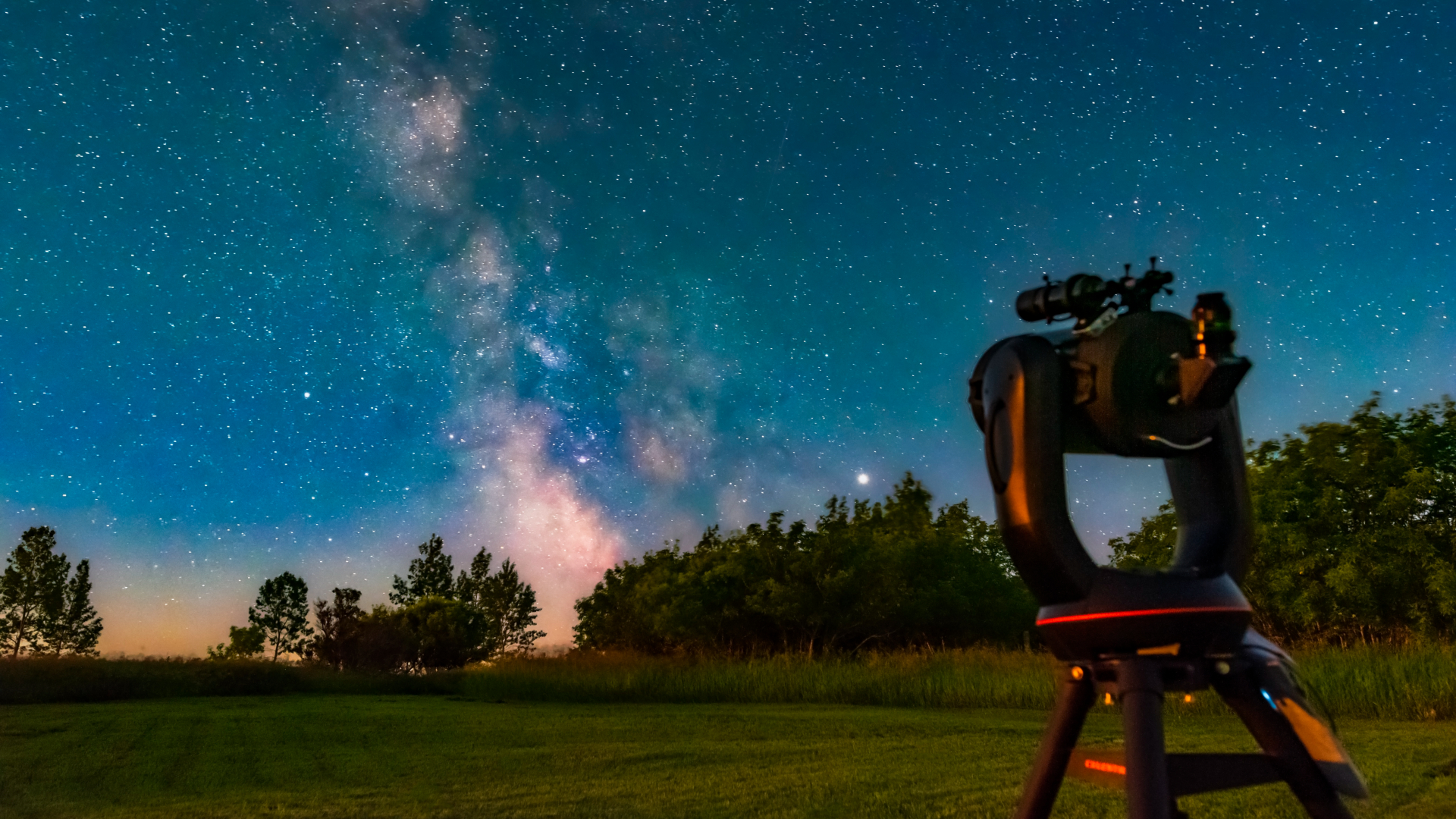First Stars Were Huge and Dark
The firststars to form in the universe may not have shone like those today, but insteadmay have been invisible ?dark stars? powered by the annihilation of dark matter,a new study finds.
And,researchers say, they would have been gargantuan.
Darkmatter, invisible stuff which scientists think makes up the bulk of theuniverse, has been considered to have role in the evolution of the earlyuniverse but not in the formation of the first stars.
Exoticprocesses
Accordingto the conventional theory for how the first stars were born, hydrogen andhelium atoms clumped and swirled together in proto-stellar clouds, and as they cooled,the gas clouds shrank and became denser. The cooling and shrinking continueduntil hydrogen and helium began to fuse, igniting the fusion engine that powersour sun and other stars.
For the newstudy, detailed in the January issue of the journal Physical Review Letters,astrophysicists calculated how dark matter would have affected the temperatureand density of the gas that clumped together to form the first stars.
Thefindings suggest that darkmatter particles interacted so that they "annihilated" eachother, producing subatomic particles called quarks and their antimattercounterparts, antiquarks. This annihilation produced heat that would have keptthe proto-stellar cloud of hydrogen and helium from cooling and shrinking andthus preventing fusion reactions from igniting.
Breaking space news, the latest updates on rocket launches, skywatching events and more!
"Theheating can counteract the cooling, and so the star stops contracting for awhile, forming a dark star" some 80 million to 100 million years after theBig Bang, said study team member Paolo Gondolo of the University of Utah.
Largeand fluffy
Theseso-called dark stars, named for the song "Dark Star" by the GratefulDead, would contain mostly normal matter, in the form of hydrogen and heliummolecules, but would be vastly larger (about 400 to 200,000 times wider) and"fluffier" than the sun and other stars.
It isconceivable that dark stars exist today, though they would not emit visiblelight. Instead they would produce gamma rays, neutrinos and antimattersuch as positrons and antiprotons, Gondolo said.
"Withyour bare eyes, you can't see a dark star," Gondolo said, "but theradiation would fry you."
Thefindings of the study have opened a new phase in the evolution of stars andcould aid in the search to find and identify exactly what dark matter is,Gondolo added.
- Video: Searching for SuperStars
- The 10 Brightest Stars
- Top 10 Star Mysteries

Andrea Thompson is an associate editor at Scientific American, where she covers sustainability, energy and the environment. Prior to that, she was a senior writer covering climate science at Climate Central and a reporter and editor at Live Science, where she primarily covered Earth science and the environment. She holds a graduate degree in science health and environmental reporting from New York University, as well as a bachelor of science and and masters of science in atmospheric chemistry from the Georgia Institute of Technology.
